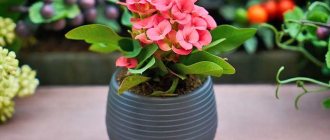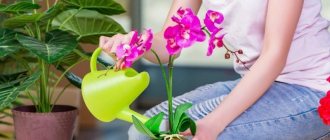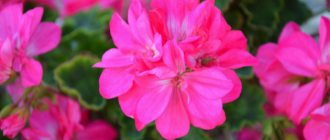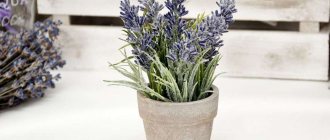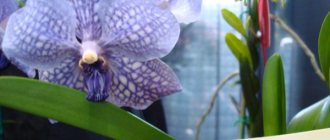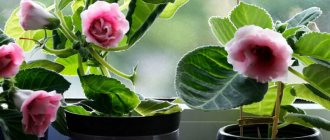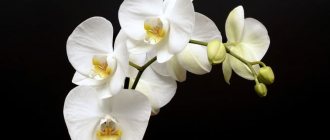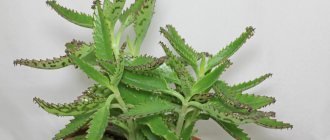Nature lovers can admire the beautiful plants endlessly. Home flowers create a mood and fill life with bright colors. It’s rare to find a house or apartment without pots of herbs. The fashion for them is not going away, only interest in the art of decorating interiors in this way is rapidly increasing. There are many types of indoor flowers, differing in size, growing method and other features. Some varieties are intended for single planting, while others will look better in a green composition against a background of grass or among climbing plants.
Humidity
Air humidity is important for the normal development of indoor plants. Cacti, olive, oleander and some other plants from dry regions of the globe prefer dry air. They grow, bloom and bear fruit better. In hot weather, to humidify the air, pots with plants are placed on low trays covered with a layer of fine gravel and filled with water. Water, evaporating, creates a humid atmosphere around the plants. In summer, it is better to spray the plants 2-3 times a day with water at room temperature. For many plants, this procedure is very useful in winter, especially in an apartment with central heating. When spraying, try not to get water on the blooming flowers. You can increase air humidity by placing pots of plants in boxes filled with moist peat. A pleasant life for a moisture-loving plant is ensured by placing its pot in a larger one. The space between the pots is filled with wet peat. Philodendron, monstera and some other plants have aerial roots. They need to be sprayed regularly to avoid drying out.
How to prune house flowers correctly
Seasonal removal of stems is another subtlety in caring for indoor plants. A beautiful, lush crown can be obtained by cutting off the tips of the shoots.
Do not rush to throw away cut branches that will serve as propagation material.
To care for flowering plants, you need knowledge and experience. For the formation of buds of indoor roses, gerberas, and camellias, special conditions are required. Try planting unpretentious balsam, begonia or pelargonium first. Remove wilted inflorescences - the plant will delight you with new buds. The stems and shoots of geraniums and Kalanchoe need to be cut by 2/3 so that the bushes bloom profusely next year.
Watering
One of the main tasks of a gardener is to learn to recognize the water needs of each indoor plant. After all, excess water or lack of it leads to the death of the plant. There are two ways to water indoor plants. First: water the soil in the pot until water appears in the pan. The second is to pour water directly into the pan. Both methods have disadvantages. When watering from above, the soil is not always saturated with water, and the lower layers of the root system remain dry. When watering from below, the water does not always reach the top of the ground. Therefore, it is best to combine both methods. Epiphyte plants and dried out plants should be immersed in water along with the pot for 35-50 seconds. After watering, the water accumulated in the trays must be removed. In the summer, to avoid large losses of moisture, cover the soil in pots with moss, peat or dry plant residues with a layer of 2-3 cm. Water with water at room temperature as the soil dries, preferably in the evening. After watering, it is important to loosen the soil.
It is best to water indoor plants with rainwater, since tap water contains bleach. In order for the chlorine to evaporate from the water and the lime to settle, the water must be left to stand for 12-14 hours. Or add soda to it (0.5 teaspoon per 1 liter). In summer, it is recommended to water some moisture-loving plants twice a day - in the morning and in the evening. In summer, plants are watered in the evening, and in late autumn and winter - in the morning. Transplanted plants should be watered less frequently, since the roots have not yet penetrated the soil and water is absorbed slowly. To avoid burns, do not water plants exposed to direct sunlight. And remember: watering should be increased during the flowering time of plants.
An important feature of the light in the room is that it is directed one way. It is towards the windows that plants turn their leaves, grow shoots, and bend. Rotating the plants regularly helps somewhat. Plants are usually turned twice a season - in autumn and spring. There are plants that do not like to turn around, such as cacti. For them, a change in the position of the sun is a signal of danger (in nature this happens if a plant is torn out, the root system is damaged, etc.). When turning around or changing the lighting, cacti that are about to bloom can drop their buds or turn them into ordinary shoots. Plants with green leaves do much better in low light than their variegated relatives. During the flowering period, plants should receive a certain dose of direct sunlight every day. The level of illumination for each plant is individual.
Direct sunlight is necessary for long-flowering plants, some cacti, agaves, aloe, bulbous, oleander, pelargonium, gerbera, etc. In a room, it is better to place such a plant on a well-lit windowsill, but without touching the glass. Most indoor plants need light coming in through windows and some sun. These are achimenes, caladium, arrowroot, bougainvillea, peperomia, etc. Remember, the morning sun is not as strong and hot as the afternoon sun. Therefore, try to provide your plants with at least two hours of sunlight every day, but not daylight. Fuchsia, philodendron, ferns can easily tolerate partial shade... This is not difficult to do by placing the plants on shaded windows.
Keep ivy, river begonia, monstera, some bromeliads, and certain types of ferns as far as possible from light sources. In winter, there is no need to worry that plants receive little light. During this period, most plants rest: growth slows down or stops. Therefore, the need for sunlight is minimal. Only subtropical and tropical plants are recommended to be illuminated in the autumn-winter period. An important biological feature of the plant is a clearly defined rhythm of growth and dormancy. The growth period usually occurs in the spring and summer months, when all processes are especially vigorous. In autumn-winter, many plants enter a period of relative dormancy. However, they do not have complete peace. Under favorable conditions, some plants continue to bloom and vegetate. During the dormant period, complex physiological and biochemical processes occur in indoor plants, preparing the plant for growth next year. Plants, especially deciduous ones, need to create conditions that would allow them to slow down the processes of photosynthesis and respiration in the autumn-winter period in order to more easily pass through the dormant stage: sharply reduce watering, stop feeding, and move plants, if possible, to cool, shaded or dark rooms. The duration of dormancy varies - from three to four months.
Dracaena Sandera
New Africa / Shutterstock
Dracaena Sandera has a thin, curved trunk with constrictions. For this it is called the “bamboo of happiness.” But dracaena has nothing to do with this tropical plant.
How to care
Light . Dracaena Sandera loves light, but also grows well in the shade. But it is better to keep this plant away from direct sunlight.
Water . You need to water as the soil dries out: about once or twice a week. Dracaena leaves should be periodically wiped with a damp cloth or cotton pad.
Transplant . Once a year, regardless of age.
What else do you need to know . The lower leaves may turn yellow. If this process is slow, this is normal; if they change color abruptly, the plant needs feeding. Dracaena leaves may begin to curl: this means that the temperature in the room is low for it.
Warm
For the normal growth and development of indoor plants, warmth is critical, especially in winter. In relation to it, all indoor plants are usually divided into three groups:
- Plants that grow freely indoors at any positive temperature: tradescantia, epiphyllum, dracaenas, cordylines, ficuses, philodendrons, cyperus, etc.;
- Plants that thrive in cold rooms in winter: some types of palm trees, olive, oleander, fuchsia, cyclamens, agave, agapanthus, roses, etc.;
- Heat-loving plants that require a temperature of at least +25 °C in winter: some types of palms (date, kentia), all cacti, orchids, bromeliads, fittonia, etc.
The air temperature in the rooms should be regulated by additional heating.
Echeveria
Pxhere
This succulent, native to America, is called the “stone rose” because its large, fleshy leaves grow in the shape of this flower. Echeveria can be green, reddish, or lilac.
How to care
Light or shadow . Echeveria is not afraid of direct light and dry air. It will also survive in the shade, but it will stretch upward: it will develop a trunk and lose its decorative appearance.
Water . In summer you can water once a week, in autumn and spring once a month, and in winter generally once every month and a half. If you water your echeveria too often, its roots may rot.
Transplant . While young - once a year, then once every few years.
What else do you need to know . In winter, echeveria can be moved to a room where the temperature does not rise above 10 degrees. If this fails, make sure that the plant receives enough light, otherwise it may stretch.
We now have a channel about discounts! In the Telegram channel “Fire-Price” we find promotions for things that seem useful and cool to us. Subscribe
